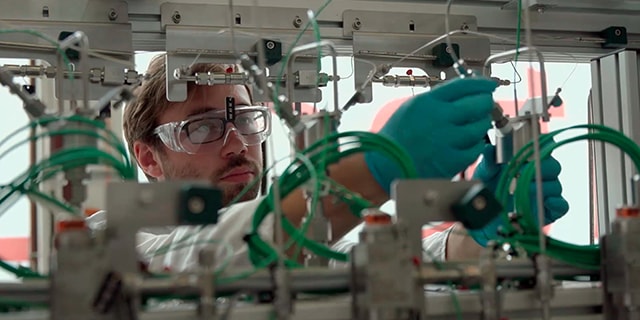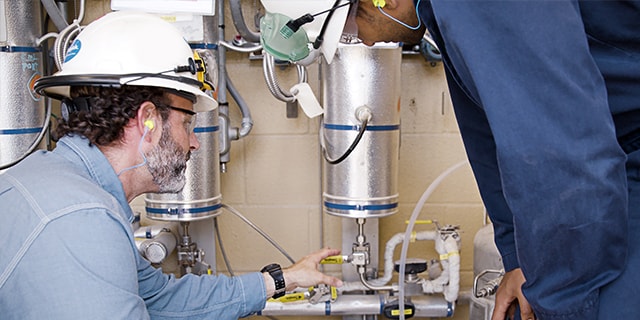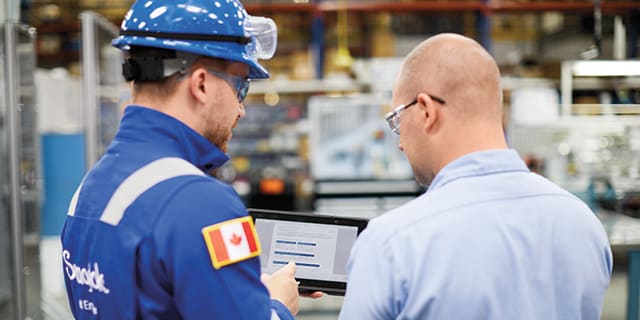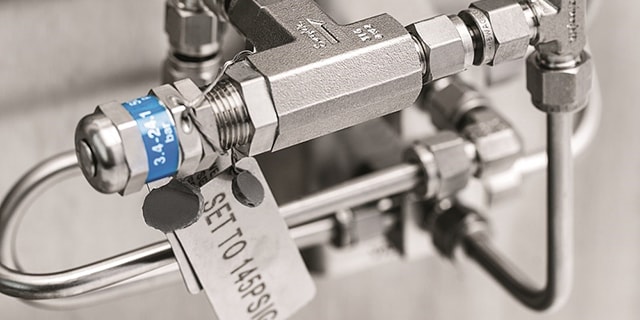Tackling Practical Performance Issues in Fluid and Sampling Systems

Tackling Practical Performance Issues in Fluid and Sampling Systems
Phil Mathews, Director of Technical Services, Swagelok Los Angeles
In industrial fluid systems and sampling systems there are six primary goals, three analytical and three operational. The analytical goals are a sample that’s compatible with the analyzer, a sample that is timely so action can be taken based on the result, and a sample that is representative of the process conditions. The operational goals are a reliable, cost effective, and safe fluid system. Meeting these goals depends on taking into account the complete design and a number of the seemingly little things that can impact performance.
What are the “little things?” Industrial systems can comprise countless components, including tubing and tube fittings, valves, gauges and much more. Each of these components represents a potential failure point, and choosing the wrong component can impact operational efficiency, product quality or, in a worst-case scenario, worker safety. And even if all the right choices have been made, a variety of factors may impact sample accuracy or end-use product quality once the system is operating under real-world conditions.
Here are some key factors to look for that may be influencing the overall performance of your fluid or sampling system:
Materials matter for sample measurement. When sampling a process fluid, a sample must be compatible with the analyzer, timely so action can be taken, and representative of the process to provide a meaningful result. A plant operator may have installed state-of-the-art process analyzers to ensure that his or her product is meeting exact specifications—but that process analyzer is only as good as the sample it is analyzing, which is highly dependent on the sample conditioning system.
On its journey from the main process line to the analyzer, several factors can negatively influence the sample and its accuracy or usefulness. Some of these factors may not necessarily pose a potential safety risk, but they can result in unnecessary downtime or leave operators scratching their heads as to why samples might not be meeting specifications or tracking known process changes.
One of the most common issues our team sees in the field is simple hose material incompatibility or suitability for a given application. For example, process gases with very small molecules—things like helium, hydrogen or even carbon dioxide—can permeate through fluoropolymers. A technician may be getting measurement errors simply because a Teflon® hose has been used in an application where it is not ideally suited, influencing sample representativeness. Another similar issue is adsorption, where a system media analyte physically sticks to the interior wall of a tube or hose—leading to measurement issues from the analyzer as the sample is no longer representative of the process.
These issues can cause significant and often unnecessary troubleshooting time to diagnose and obtain a representative sample, even when the process fluid itself may in fact be perfectly up to spec. Ensure that any hoses in your sampling system are fully compatible with system media and application to avoid inaccuracies.
See how we can help optimize your systems:
Selecting the right components to avoid complexity. In many fluid systems, the product must be maintained at a certain pressure or temperature to meet a specification or avoid phase change. But pressure losses and heat transfer occur naturally as the fluid moves throughout the system, meaning that operators take certain measures to ensure pressure is maintained at an adequate level.
While some pressure losses are inevitable, there are certain best practices that can be followed to minimize them. For example, proper line sizing and valve selection is essential to maintaining a desired pressure without adding unnecessary complexity to the system. It’s not uncommon for complexity to increase unnecessarily during maintenance cycles in a poorly designed system, for example adding supplementary measures to maintain target pressure like a sample pump.
But why add a pump if you do not need to? Consider the complexity a supplementary pressure pump brings to a fluid system; it is one more component that will require its own power to operate, attention from technicians for regular maintenance checkups, replacement parts when failure occurs, and other ongoing worries. Taking the time upfront to fully understand the system and identify the correct valve—and to order it, if the right valve is not already on hand in your parts shop—before making a replacement can make a big difference in terms of overall fluid system performance and efficiency.
Maintaining proper pressures and temperatures. Like pressure, temperature is a critical factor in phase changes and can be influenced by a variety of factors throughout fluid and sample conditioning systems. And in some instances, technicians must pay special attention to ensure that the right temperature is maintained throughout the system.
Consider drawing samples from a gas process line. Hot gases can drop in temperature very rapidly and can quickly condense into liquids if the right measures are not taken. If the temperature and pressure are not managed properly from the point at which the process sample is taken from the main system throughout its journey to the analyzer, the result is a bad sample. It does not take much—just a foot or so of uninsulated or improperly heated tubing can cause a significant gas temperature drop, which may result in a mixed phase sample that is no longer representative or very useful.
Some technicians dealing with condensation issues may add coalescers or knock out pots to the sample conditioning system in order to remove liquids, but this is not always a best practice, and it may further compromise a sample’s usefulness. Instead, ensure that all tubing is insulated or heated to prevent condensation in the first place.
Want to learn more about proper optimization of your fluid or sampling system? Get in touch to schedule a fluid or sampling system evaluation with our specialists.
Related Articles

How to Improve Fluid System Performance
When fluid systems fail to perform safely and efficiently, plant productivity suffers. Swagelok can relieve the pressure of maintaining good system performance by providing expert guidance and helping to create a culture of continuous improvement.

Do’s and Don’ts for Sampling System Accuracy
Follow these do’s and don’ts to obtain more accurate, representative samples from your industrial sampling system.

Why Haven’t Sampling Systems Improved — Three Main Reasons
Over the past 50 years, process analyzers have vastly improved— but sampling systems have not. Luckily, most issues are due to human error & can be corrected with proper training. Learn three reasons why sampling systems fail & solutions for your plant.

